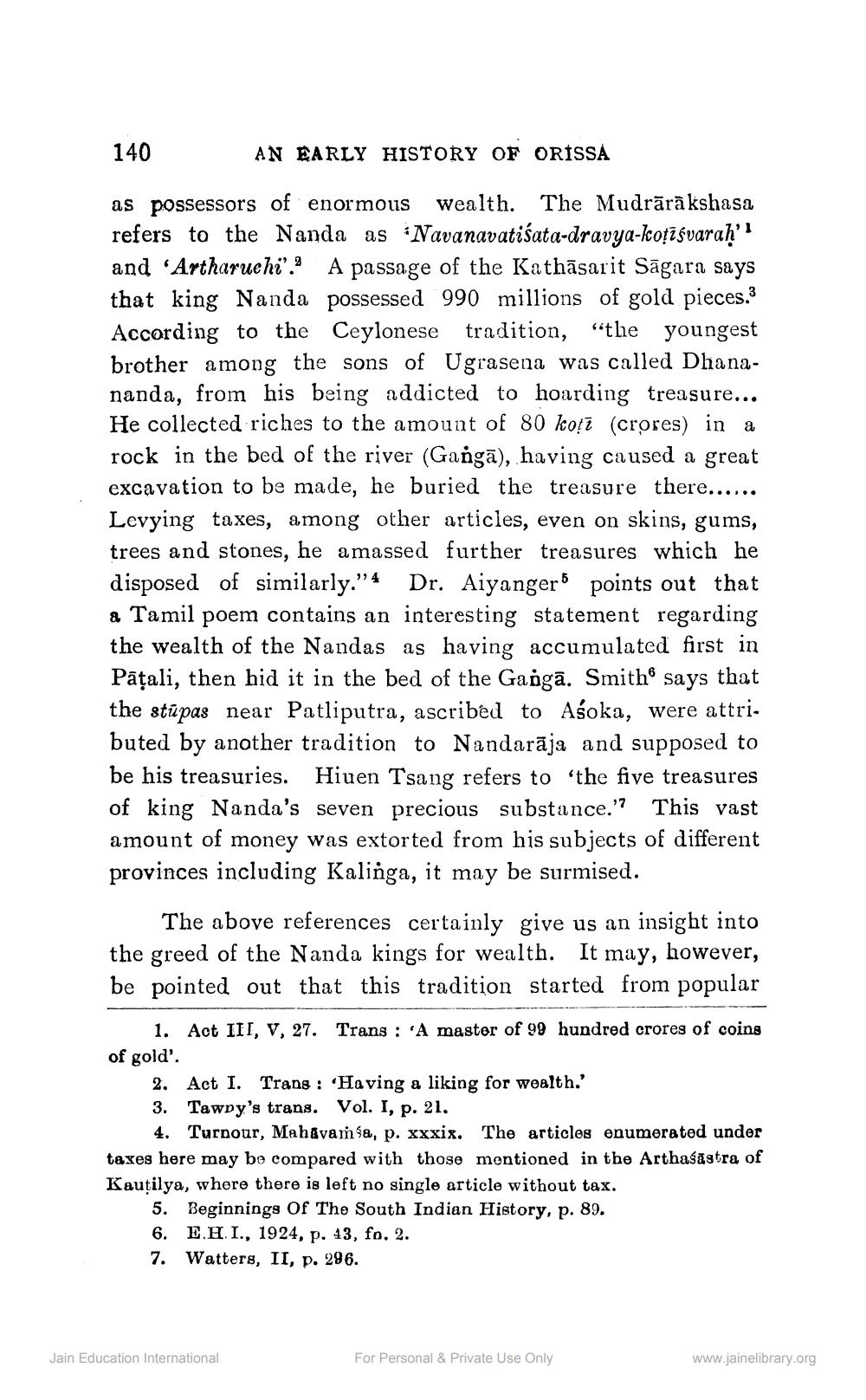________________
140
AN EARLY HISTORY OF ORISSA
as possessors of enormous wealth. The Mudrārākshasa refers to the Nanda as Navanavatiśata-dravya-koțīśvarah" and 'Artharuchi'. A passage of the Kathāsarit Sāgara says that king Nanda possessed 990 millions of gold pieces.3 According to the Ceylonese tradition, “the youngest brother among the sons of Ugrasena was called Dhanananda, from his being addicted to hoarding treasure... He collected riches to the amount of 80 kotī (crores) in a rock in the bed of the river (Gangā), having caused a great excavation to be made, he buried the treasure there...... Levying taxes, among other articles, even on skins, gums, trees and stones, he amassed further treasures which he disposed of similarly."4 Dr. Aiyanger points out that a Tamil poem contains an interesting statement regarding the wealth of the Nandas as having accumulated first in Pāțali, then hid it in the bed of the Gangā. Smith® says that the stūpas near Patliputra, ascribed to Asoka, were attributed by another tradition to Nandarāja and supposed to be his treasuries. Hiuen Tsang refers to the five treasures of king Nanda's seven precious substance.'? This vast amount of money was extorted from his subjects of different provinces including Kalinga, it may be surmised.
The above references certainly give us an insight into the greed of the Nanda kings for wealth. It may, however, be pointed out that this tradition started from popular
1. Act III, V, 27. Trans : 'A master of 99 hundred crores of coins of gold'.
2. Act I. Trans : Having a liking for wealth.' 3. Tawny's trans. Vol. I, p. 21.
4. Turnour, Mahavamsa, p. xxxis. The articles enumerated under taxes here may be compared with those mentioned in the Arthaśāstra of Kautilya, where there is left no single article without tax.
5. Beginnings Of The South Indian History, p. 89. 6. E.H.I., 1924, p. 43, fo. 2. 7. Watters, II, p. 296.
Jain Education International
For Personal & Private Use Only
www.jainelibrary.org




